Shopping Cart Types
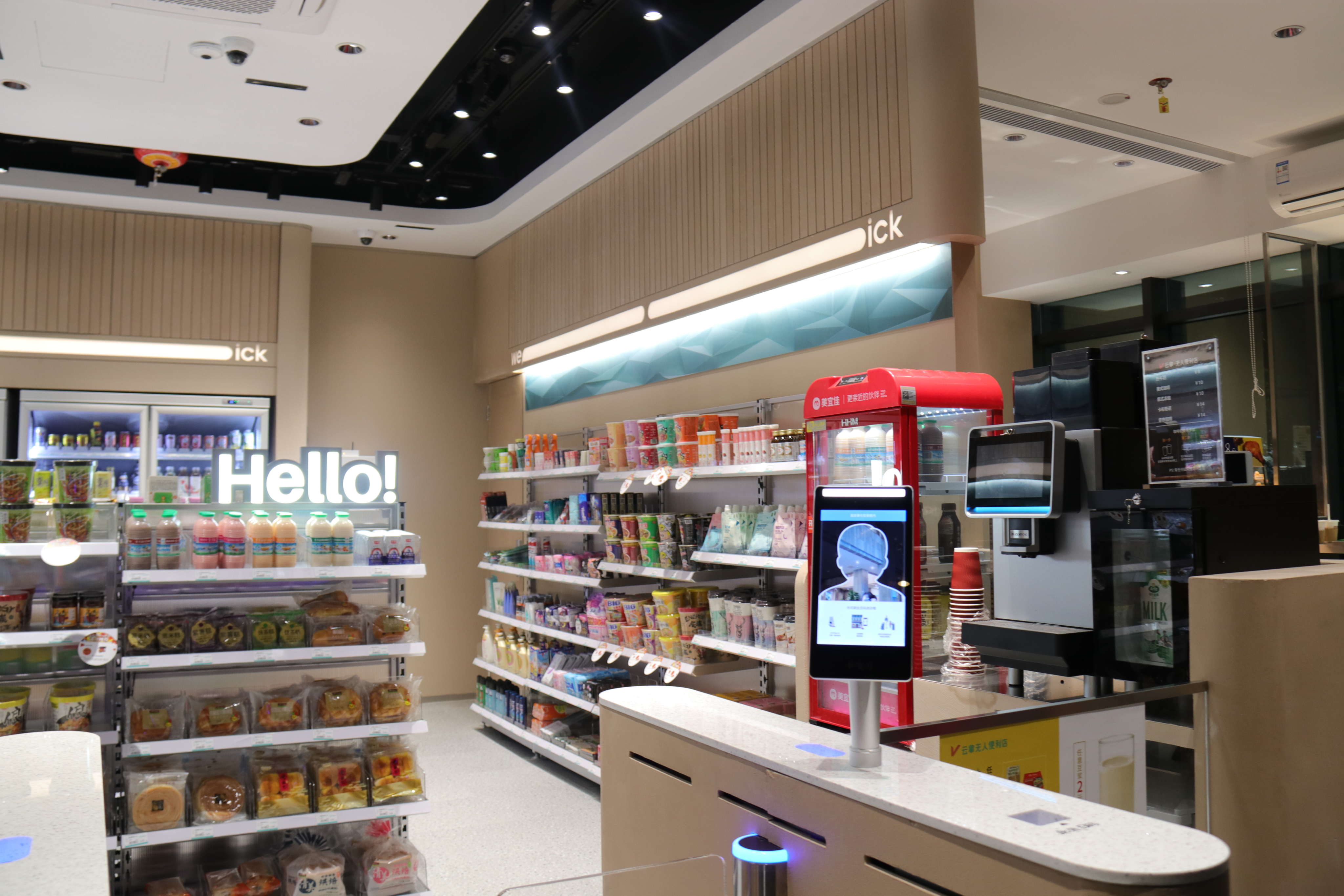
Shopping cart types describe the different designs and functions of carts you use when shopping in stores or online. Knowing the types of shopping carts helps you make better choices as a shopper and helps businesses increase sales. Many people leave their shopping cart before buying, and the average cart abandonment rate is about 69%. Reasons include unexpected costs, complicated checkout steps, and trust issues. You can see how the right shopping cart design can improve your experience and help stores keep more customers. Stores that offer easy-to-use, secure, and mobile-friendly carts meet the needs of today’s shoppers. Different types of shopping carts fit different shopping needs, so picking the best one can make a big difference.
Key Takeaways
Different shopping carts serve unique needs, from small hand baskets for quick trips to heavy-duty carts for bulky items.
Choosing the right cart type improves shopping comfort, safety, and store efficiency, helping customers shop faster and stores sell more.
Materials matter: metal carts are strong and durable, plastic carts resist rust and are quiet, and hybrid carts combine the best of both.
Online stores use hosted or self-hosted ecommerce carts, each offering different levels of control and ease to reduce cart abandonment.
Well-designed carts and checkout processes boost customer satisfaction and increase sales by making shopping easier and more enjoyable.
Types of Shopping Carts
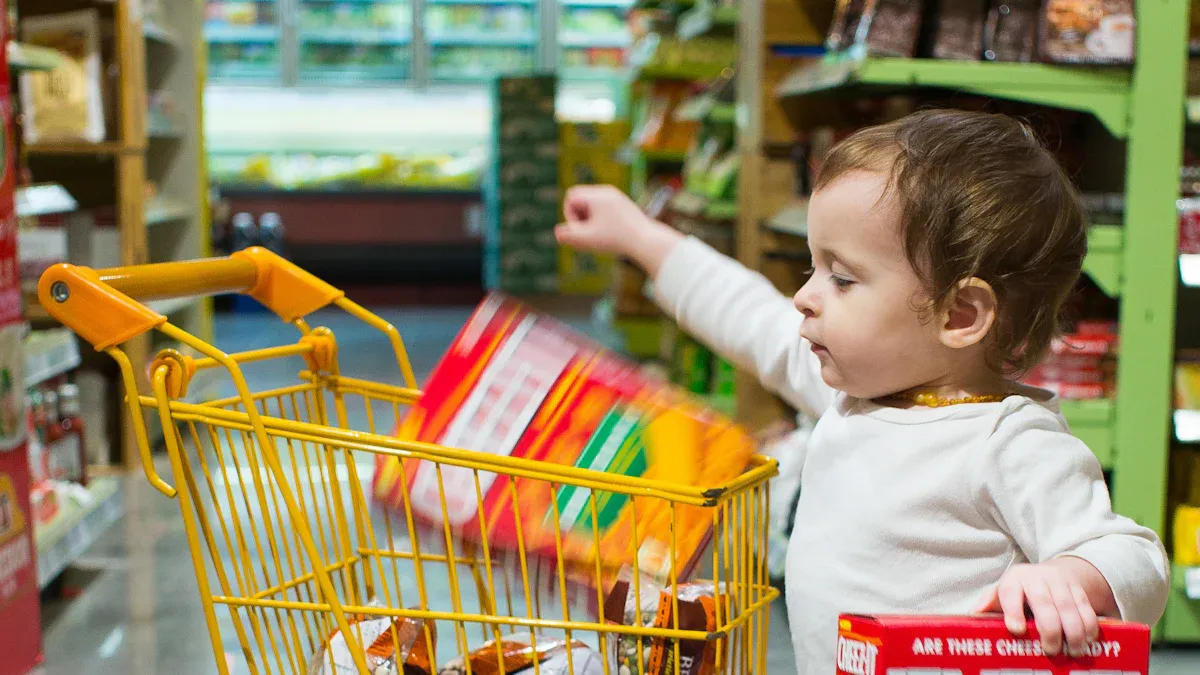
You will find many shopping cart types in stores today. Each type fits different shopping needs, store layouts, and customer groups. Choosing the right cart can make your shopping trip easier and help stores serve you better. Let’s look at the most common types of shopping carts and what makes each one special.
Roller Basket Carts
Roller basket carts are small carts with wheels and a handle. You pull them behind you, much like a suitcase. These carts work well in supermarkets, hypermarkets, and retail stores. They are easy to move, stack, and store. Many shoppers prefer them over a standard shopping cart because they are less likely to tip and take up less space in crowded aisles.
Tip: Roller basket carts are especially popular in North America and Asia, where large supermarkets and hypermarkets are common.
Here is a table showing how roller basket carts compare in different retail environments:
Aspect | Details |
|---|---|
Product Types | Roller basket carts, Child carts, Tote boxes, Basket carts, Cargo carts, Others |
Retail Applications | Supermarkets, Hypermarkets, Retail stores |
Usage in Supermarkets | Largest consumers due to high customer volume, variety of items, and large parking lots requiring trolleys |
Basket Cart Advantages | Easier maneuverability, safer (less tipping), space-efficient (stackable), preferred over traditional carts |
Market Growth Drivers | Expansion of supermarkets and hypermarkets globally |
Regional Insights | North America leads due to large supermarket chains and retail analytics; Europe grows with quality standards; Asia Pacific shows highest CAGR with increasing hypermarkets |
Cargo Carts
Cargo carts are heavy-duty carts designed to carry large or bulky items. You often see them in warehouse stores, home improvement centers, and big-box retailers. These carts come in light, medium, and heavy-duty versions. They help you move heavy loads safely and efficiently.
Measuring push and pull forces keeps you safe and makes work easier.
Tools like force gauges and sensors help measure these forces.
Good cart design, wheel material, and load balance all affect how easy the cart is to use.
Keeping the force needed below safety standards, such as OSHA’s 50 lbs rule, helps prevent injuries.
The cargo cart market is growing fast, reaching about $1.2 billion in 2023 and expected to hit $2.1 billion by 2032. This growth comes from more online shopping, better ergonomic designs, and the need for efficient material handling.
Child Carts
Child carts are standard shopping carts with a built-in seat for children. You often see them in grocery stores and supermarkets. These carts keep your child safe and comfortable while you shop. Some child carts even have fun designs, like cars or animals, to keep kids entertained. Stores use these carts to make shopping easier for families.
Tote Carts
Tote carts are smaller carts designed for quick trips or smaller loads. Some tote carts now use smart technology, like weight sensors and AI. These features let you scan and pay for items right on the cart, skipping the checkout line. Tote carts help you shop faster and make the process smoother for both you and store employees. They can also suggest products, show special offers, and help manage your shopping list.
Description | Practical Benefit | |
|---|---|---|
Response Time | Measures system responsiveness in updating the GUI after user actions like RFID scans | Enables faster interaction and checkout |
Database Efficiency | Speed of querying and updating the MySQL database | Ensures real-time inventory updates and smooth operation |
RFID Scanning Speed | Efficiency and accuracy in processing RFID UIDs | Speeds up product registration and checkout |
Accuracy of Load Cell Measurements | Precision in detecting weight changes | Verifies correct product registration, reducing errors |
Anomaly Detection Speed | Time taken to detect potential theft or unauthorized removal | Enhances security and reduces losses |
User Interface Responsiveness | Fluidity of interactions with the GUI | Improves user experience and operational efficiency |
System Throughput | Combined performance of scanning, database, GUI updates, and anomaly detection | Reflects overall system efficiency and dependability |
Basket Carts
Basket carts are small carts that hold a hand basket. You can use them when you want to buy only a few items but do not want to carry a basket. These carts are easy to move and store. They help stores save space and reduce clutter in the aisles. Basket carts are popular in smaller stores and convenience shops.
Note: Basket carts help stores track what items you buy together. This information helps stores place related products near each other and offer better deals.
Two-Tier Carts
Two-tier carts have two shelves, one above the other. You can separate fragile items from heavier ones. These carts are perfect for shoppers who want to organize their groceries or keep items like bread and eggs safe. Two-tier carts are common in grocery stores and specialty food shops.
Garden Carts
Garden carts are sturdy carts designed for outdoor use. You will find them in garden centers, home improvement stores, and nurseries. These carts can carry soil, plants, tools, and other heavy items. Their large wheels make it easy to move over rough ground. Garden carts help you transport bulky or dirty items without damaging the cart or store floors.
Hand Baskets
Hand baskets are simple baskets with handles. You use them for quick trips or when you only need a few items. Hand baskets are lightweight and easy to carry. Stores use data from hand baskets to learn about your shopping habits, such as which products you buy together and when you shop the most.
Stores use this information to:
Suggest related products.
Place popular items near each other.
Offer special deals at busy times.
Metric/Aspect | Description/Findings |
|---|---|
Mean and median number of items per basket; distribution follows a Poisson lognormal model | |
Basket Size Distribution | Largest 20% of baskets generate ~50% of unit sales and 40% of revenue |
Shopper Behavior | Basket size varies by retail type; more variety leads to larger baskets |
Data Source | Household panel data from ~63,000 US households, 9.4 million baskets (2016) |
Application to Hand Baskets | Basket defined as items purchased together regardless of carrying method, thus applicable to hand baskets |
Retailer Growth Strategies | Increase number of baskets, basket size, or frequency of high-value baskets |
Manufacturer Growth Strategies | Increase basket penetration or number of packs per basket |
Implications | Provides benchmarks and actionable insights for optimizing store management and marketing |
Folding Carts
Folding carts are carts that you can fold flat for easy storage. You will find them useful if you have limited space at home or in your car. These carts are lightweight and easy to move. Many older adults and city dwellers prefer folding carts because they are simple to carry and store.
Folding carts save space in small homes and apartments.
They are easy to transport, making them great for travel.
Lightweight frames and all-terrain wheels make them easy to use in different places.
Heavy-Duty Carts
Heavy-duty carts are built to carry very large or heavy items. You will see them in warehouses, big-box stores, and garden centers. These carts have strong frames and large wheels. They help you move heavy loads safely and quickly. Heavy-duty carts are essential for stores that sell bulk goods or building materials.
Hybrid Carts
Hybrid carts combine features from different shopping cart types. For example, a hybrid cart might have the size of a standard shopping cart but fold like a folding cart. Some hybrid carts use eco-friendly materials or energy-saving designs. These carts help stores reduce their carbon footprint and meet new environmental rules.
Performance Metric | Result / Description |
|---|---|
CO2 Emissions Reduction from Gasoline to Full Hybrid | 34% reduction in emissions, demonstrating significant improvement over conventional engines. |
CO2 Reduction from Gasoline to Diesel | 11% reduction, an intermediate step towards hybrid adoption. |
Additional Reduction from Diesel to Diesel Mild Hybrid | 6% further reduction, showing incremental benefits of mild hybrid technology. |
Additional Reduction from Gasoline Mild Hybrid to Full Hybrid | 23% further reduction, highlighting the efficiency gains moving from mild to full hybrid. |
Efficiency of CO2 Reduction per Battery Size | Mild hybrids are the most efficient, followed by full hybrids, then plug-in hybrids, with BEVs least efficient due to large battery requirements. |
Contribution to EU 2030 CO2 Reduction Target | Non-plug-in hybrids could achieve over 75% of the 37.5% target, indicating strong potential impact. |
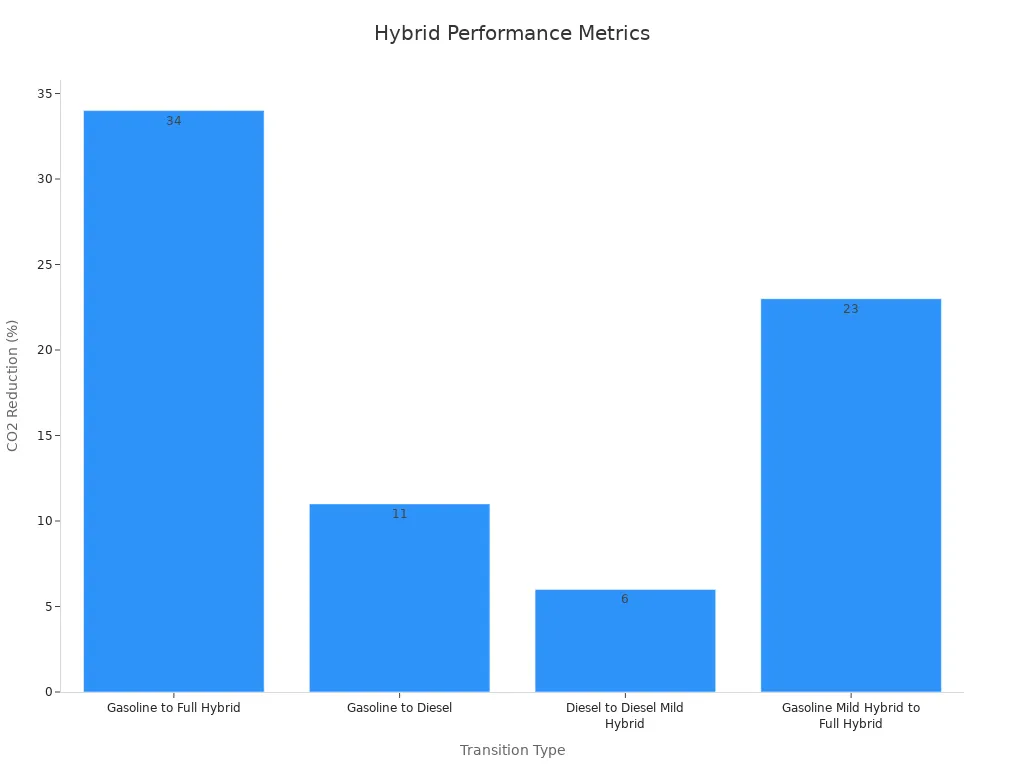
Specialty Carts
Specialty carts serve unique needs in niche markets. You will find them in stores that sell special products, like electronics, wine, or luxury goods. Specialty carts often have custom features, such as locking compartments or temperature control. These carts help stores offer a better shopping experience and keep valuable items safe.
Specialty retailers use technology like mobile payments and self-checkout to improve your experience.
Data analytics help stores offer personalized deals and keep the right products in stock.
Specialty carts support new trends, such as sustainability and experiential shopping.
Note: Specialty carts help stores stand out by offering unique features and a better shopping experience.
You can see that the types of shopping carts available today go far beyond the standard shopping cart. Each type fits a different need, from quick trips with a hand basket to heavy-duty jobs with a cargo cart. When you know the right cart for your shopping trip, you make your experience easier and more enjoyable.
Shopping Cart Materials
Metal Carts
You often see metal carts in grocery stores and supermarkets. These carts use steel, which gives them great strength and lets you carry heavy items with ease. Metal carts last a long time if you take care of them. You can repair them by welding or replacing parts. However, metal carts can rust if you leave them outside or do not repaint them. They also make more noise when you push them across hard floors.
Here is a quick comparison of metal and plastic carts:
Feature | Metal (Steel) Carts | Plastic Carts |
|---|---|---|
Strength | Superior strength, carries heavy loads | Limited capacity for very heavy items |
Initial Cost | Generally lower | Typically higher |
Repairability | Easier to repair via welding or part replacement | More difficult to repair |
Corrosion Resistance | Prone to rust without maintenance | Resistant to corrosion and rust |
Noise Level | Louder operation | Quieter operation |
Cleaning & Hygiene | More difficult to clean | Easier to clean due to smooth surfaces |
Customization | Limited branding options | Extensive branding and color customization options |
Maintenance | Requires repainting over time due to rust | Lower maintenance costs |
Metal carts work best for stores that need strong carts for heavy shopping trips, but you must keep them clean and dry to avoid rust.
Plastic Carts
Plastic carts have become popular in many stores. They use high-density polypropylene, which makes them light and easy to push. You will notice that plastic carts do not rust, so they need less maintenance. Their smooth surfaces make cleaning simple. Some plastic carts, like the Ross shopping trolley, go through tough tests. These tests show that the carts keep their shape and do not crack, even after hundreds of uses. Plastic carts cost more at first, but you save money over time because you do not need to fix them as often.
Plastic carts also let stores pick from many colors and add logos. They run quietly, which makes your shopping trip more pleasant. However, plastic carts cannot carry as much weight as metal ones, and their wheels may wear out faster.
Hybrid Carts
Hybrid carts combine the best features of metal and plastic. You get a steel frame for strength and a plastic basket for easy cleaning and less noise. These carts last longer than all-plastic carts and cost less to maintain. Hybrid carts resist rust and offer a good balance between weight and durability. Stores like hybrid carts because they can use them for many years and spend less on repairs.
Hybrid carts also support branding and color choices. You will find that they stay quiet and smooth, even after lots of use. If you want a shopping cart that lasts and works well in different settings, hybrid carts are a smart choice.
Choosing a Shopping Cart
Factors to Consider
When you choose a shopping cart for your store or personal use, you need to think about several important factors. The size of your store matters a lot. Large stores like Costco or Sam’s Club need carts with big basket volumes and extra features. Smaller stores, such as Dollar Tree, use carts with less space. You should also consider your customer base. Families may want carts with child seats, while single shoppers might prefer smaller carts.
A comfortable handle height makes a big difference. Stores design handle heights to fit most people, so pushing the cart feels easy. Features like cup holders or special seats can improve the shopping experience. You also want to think about how easy it is to move the cart through aisles and how quickly customers can finish the checkout process.
Here is a table to help you compare shopping cart features by store type:
Store Type | Basket Volume (cu in) | Handle Height (in) | Child Seat Capacity | Special Features |
|---|---|---|---|---|
Large Warehouse | 45 | 2 | Cup holders, wide seats | |
Small Retail | <7,500 | 38-42 | 1 | Compact size, easy turn |
Tip: The right shopping cart can help your customers move faster and make the checkout process smoother.
Matching Cart Types to Needs
You should match the cart type to your store’s needs and your customers’ habits. If your store sells bulk items, pick a shopping cart with a large basket and sturdy wheels. For quick trips, use smaller carts or hand baskets. Stores with many families should offer carts with child seats and extra safety features.
Think about your budget, too. Metal carts last a long time but may cost more to maintain. Plastic or hybrid carts are quieter and easier to clean. The right choice can speed up the checkout process and keep your store running smoothly.
Ask yourself:
What do most shoppers buy?
How crowded are the aisles?
Do you want to improve the checkout process?
Choosing the best shopping cart helps you create a better shopping experience and keeps your customers coming back.
E-Commerce Shopping Carts
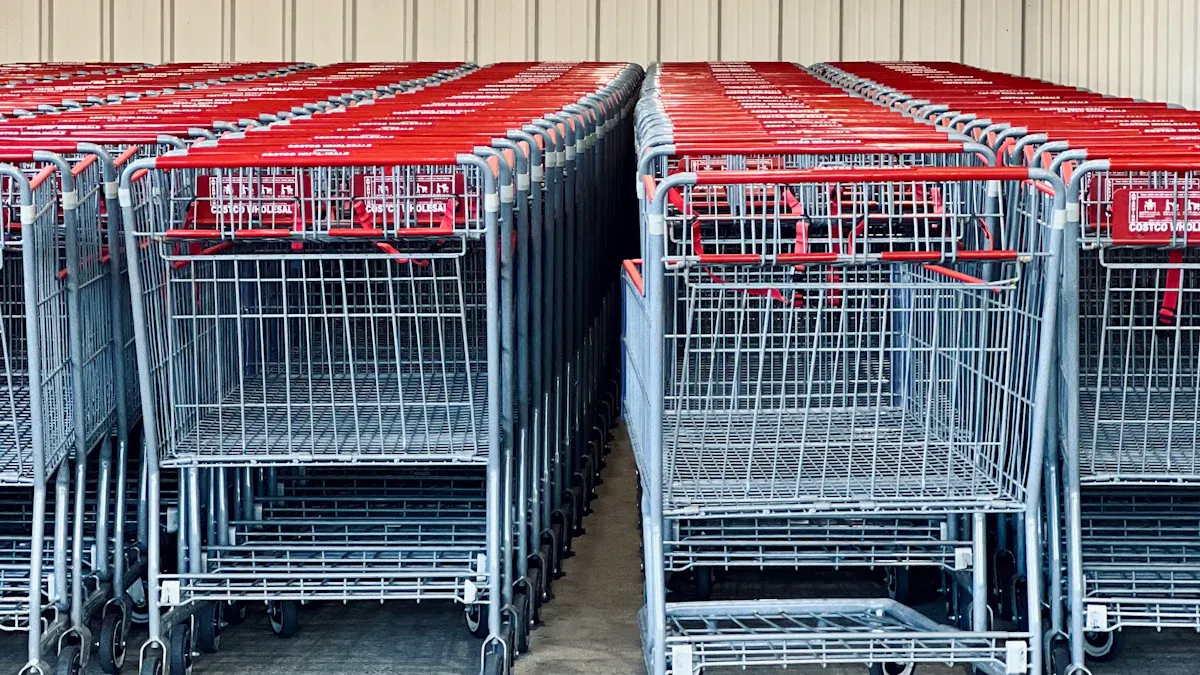
Ecommerce has changed the way you shop and sell. You now have two main types of online shopping carts: hosted carts and self-hosted carts. Each type helps you manage your store and reduce shopping cart abandonment, but they work in different ways.
Hosted Carts
Hosted carts are managed by third-party providers. You do not need to worry about technical details. These platforms handle security, updates, and performance for you. Popular hosted ecommerce platforms include Shopify, BigCommerce, Wix, and Squarespace. You can set up your store quickly and start selling right away.
Hosted carts help you focus on your business, not on fixing technical problems.
You get features like guest checkout, saved carts, and mobile-friendly designs. These features help lower shopping cart abandonment by making checkout easy. Hosted carts also support over 100 payment gateways and offer strong customer support. For example, Shop Pay on Shopify converts almost twice as many customers as regular checkouts. You can also send automatic cart abandonment recovery emails to bring back lost sales.
Here is a table comparing some top hosted and open-source ecommerce platforms:
Platform Type | Platform Name | Key Benefits | Market Share / Adoption |
|---|---|---|---|
Hosted (SaaS) | Shopify | Easy to use, scalable, tech support | 11% global market share |
Hosted (SaaS) | BigCommerce | Ready-to-use, global reach | Major player |
Hosted (SaaS) | Wix | Simple for beginners, fast setup | 3.6% market share |
Open-source | WooCommerce | Customizable, large user base | 36.68% market share |
Open-source | Magento | Powerful, secure, but complex | 7% market share |
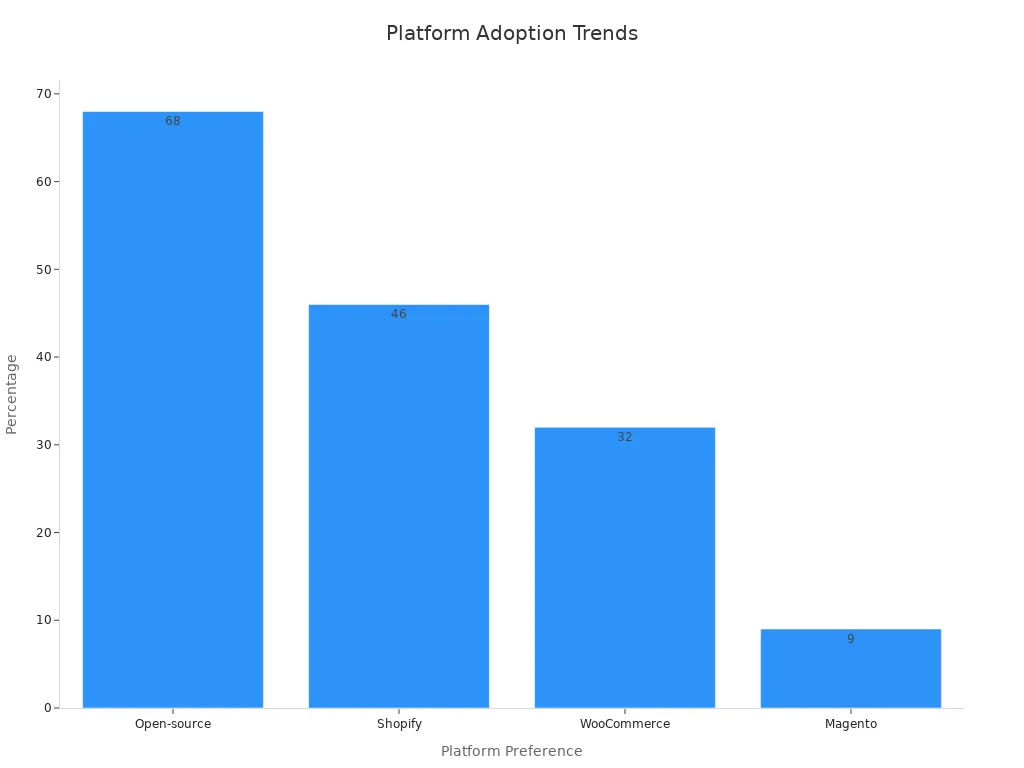
Self-Hosted Carts
Self-hosted carts give you full control over your ecommerce store. You install and manage the software on your own server. Platforms like WooCommerce, Magento, PrestaShop, and OpenCart let you customize every part of your store. You can change the design, add features, and control your data.
You get more freedom, but you need technical skills.
You must handle updates, security, and hosting.
Self-hosted carts can cost less at first, but you may pay more for maintenance and developer help.
Many ecommerce businesses choose self-hosted carts for flexibility. You can reduce shopping cart abandonment by customizing the checkout process and adding special features. However, you must make sure your site loads quickly and stays secure. If you do not manage these well, shopping cart abandonment can increase.
Most ecommerce merchants prefer open-source platforms for control, but many move to hosted solutions for ease of use.
Shopping cart abandonment remains a big challenge in ecommerce. Both hosted and self-hosted carts offer tools to help you recover lost sales, such as reminder emails and easy checkout options. As ecommerce grows, you must pick the right cart to fit your needs and keep shopping cart abandonment low.
You have many shopping cart types to choose from, each designed for different needs. Picking the right cart helps you shop faster and keeps your items safe. Stores that use well-designed carts see more impulse buys and happier customers. A study by the Baymard Institute shows that a better checkout flow can raise conversion rates by over 35%.
Specialty carts boost impulse sales and total revenue.
Tailored carts improve customer satisfaction.
Take a moment to review your current carts. Share your questions or thoughts below!
FAQ
What is the best shopping cart for small stores?
You should choose compact carts or hand baskets. These save space and help customers move easily. Small carts also cost less and fit narrow aisles.
How do I keep shopping carts clean and safe?
You can clean carts with disinfectant wipes or sprays. Many stores offer wipes at the entrance. Clean handles and seats often. This keeps you and others safe.
Are plastic carts better than metal carts?
Plastic carts resist rust and are easy to clean. They run quietly and come in many colors. Metal carts carry heavier loads and last longer if you maintain them well.
Why do some carts have two tiers?
Two-tier carts help you organize your groceries. You can keep fragile items like bread or eggs on the top shelf. Heavier items go on the bottom. This prevents damage.
See Also
Revolutionizing Online Store Operations With AI E-Commerce Tools
Cloudpick Delivers Seamless Cashier-Free Shopping Experiences Today
Understanding Corner Store Fundamentals And Their Importance
Tracing The Development And Growth Of Self-Checkout Systems
Comparing Amazon Go Versus Cloudpick Cashierless Technologies
